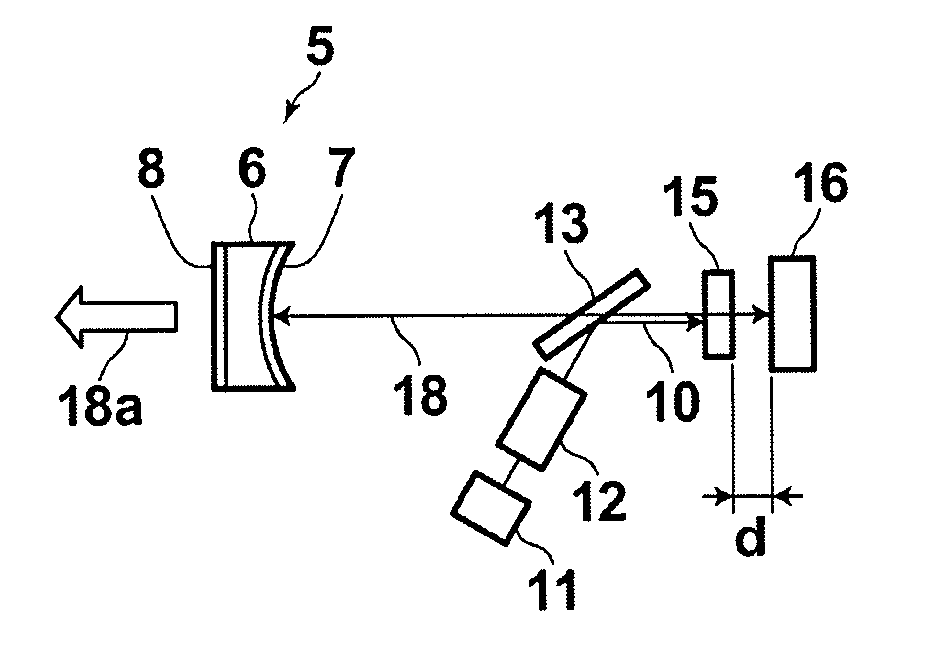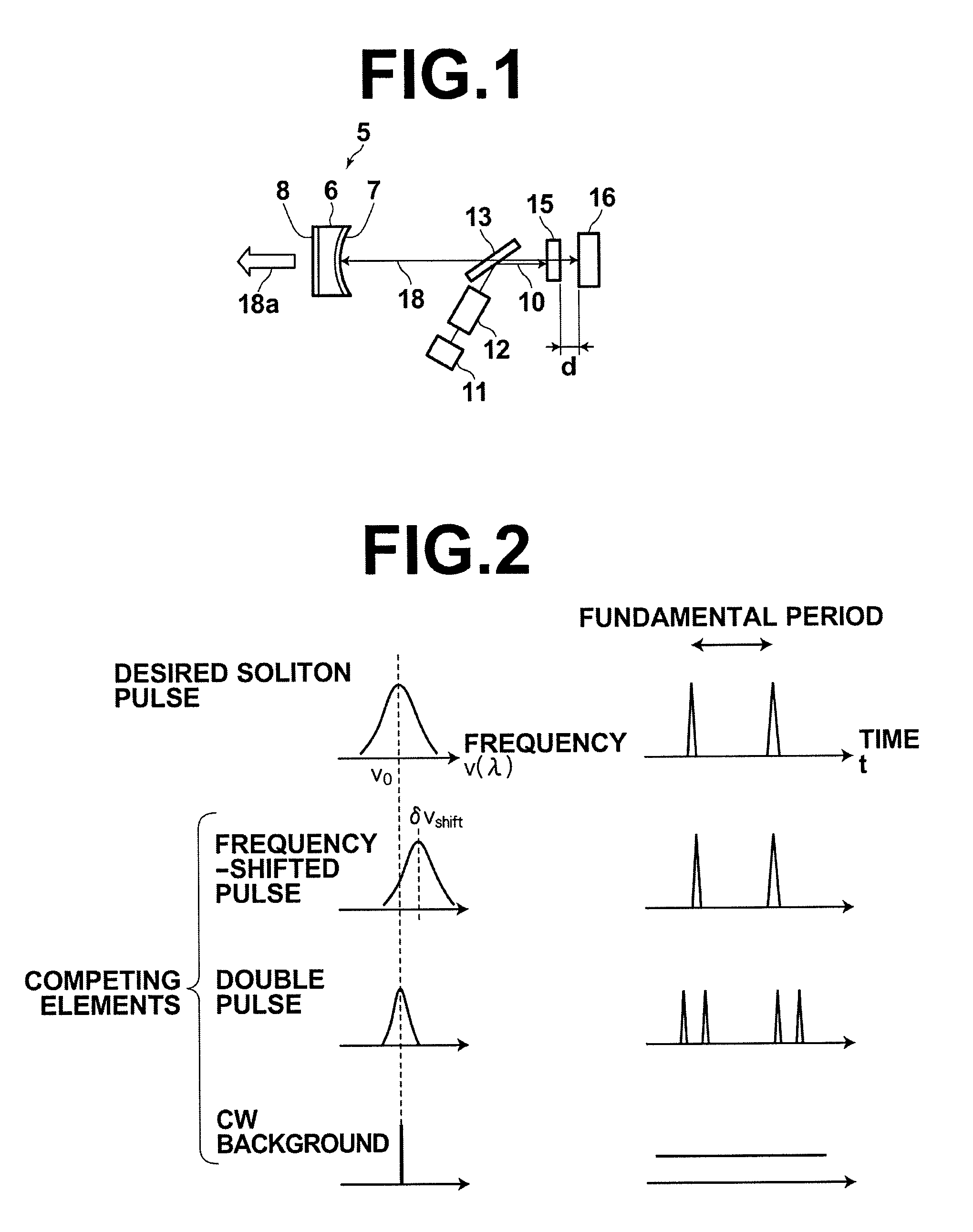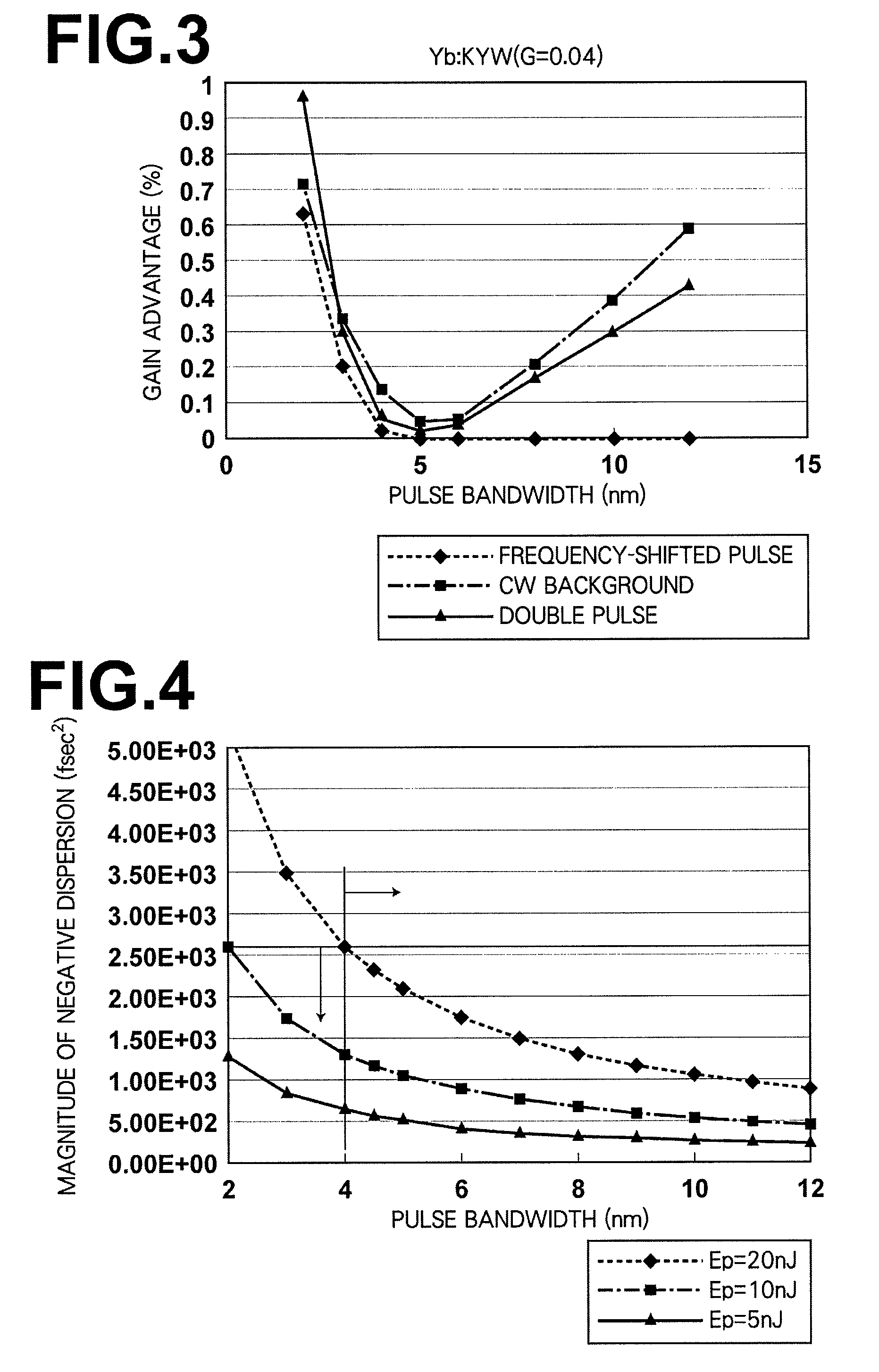Mode-locked solid-state laser apparatus
a laser apparatus and mode lock technology, applied in the direction of laser details, instruments, optical resonator shape and construction, etc., can solve the problems of difficult stably operating solid-state laser apparatuses containing one-meter class resonators, undesirable q-switched mode locking applications, and large solid-state laser apparatuses. , to achieve the effect of stably output laser light, low cost, and reduced siz
- Summary
- Abstract
- Description
- Claims
- Application Information
AI Technical Summary
Benefits of technology
Problems solved by technology
Method used
Image
Examples
Embodiment Construction
[0104]Embodiments of the present invention are explained in detail below with reference to drawings.
1. Apparatus Configuration (FIG. 1)
[0105]FIG. 1 is a schematic side view illustrating an exemplary configuration of a soliton mode-locked solid-state laser apparatus according to an embodiment of the present invention. The mode-locked solid-state laser apparatus of FIG. 1 comprises a semiconductor laser 11, an excitation optical system 12, a dichroic mirror 13, a negative-dispersion mirror 5, a semiconductor saturable absorbing mirror (SESAM) 16, and a solid-state laser medium 15. The semiconductor laser 11 emits excitation light (pumping light) 10. The excitation optical system 12 externally injects the excitation light 10 into a resonator in the mode-locked solid-state laser apparatus of FIG. 1 along a direction nonparallel to the optical axis of the resonator. The dichroic mirror 13 is arranged in the resonator, and reflects the excitation light 10 toward the solid-state laser medi...
PUM
 Login to View More
Login to View More Abstract
Description
Claims
Application Information
 Login to View More
Login to View More - R&D
- Intellectual Property
- Life Sciences
- Materials
- Tech Scout
- Unparalleled Data Quality
- Higher Quality Content
- 60% Fewer Hallucinations
Browse by: Latest US Patents, China's latest patents, Technical Efficacy Thesaurus, Application Domain, Technology Topic, Popular Technical Reports.
© 2025 PatSnap. All rights reserved.Legal|Privacy policy|Modern Slavery Act Transparency Statement|Sitemap|About US| Contact US: help@patsnap.com



